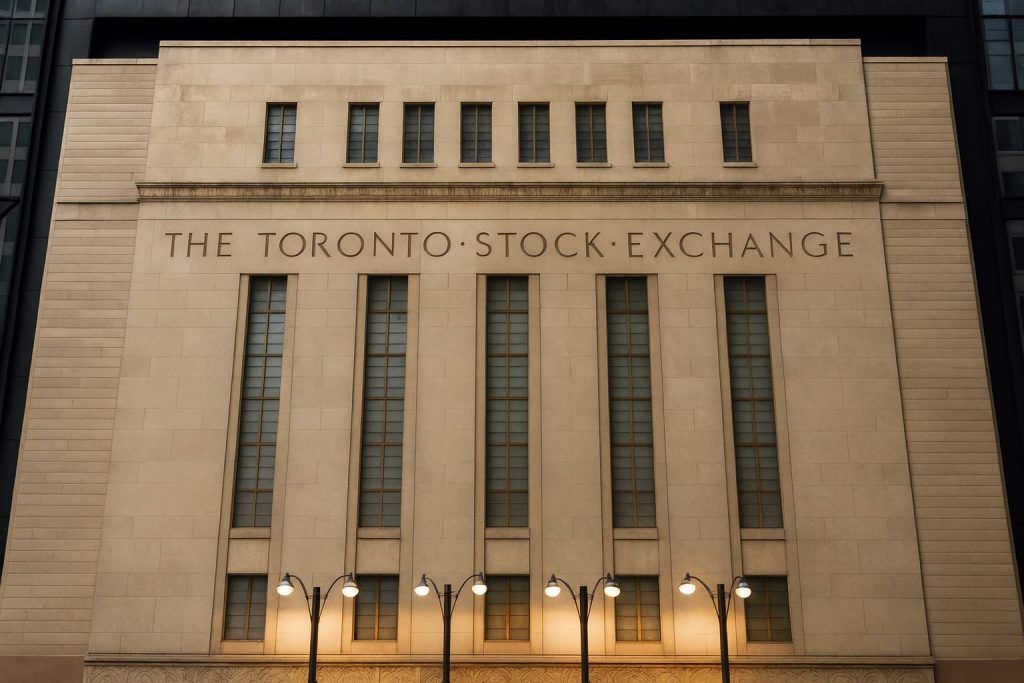U.S. equity futures are pointing to a cautious rebound on Friday, November 21, 2025, after a violent tech-led selloff and historic intraday reversal rattled Wall Street on Thursday. As of around 3:58 a.m. ET, futures tied to the Nasdaq 100, S&P 500 and Dow Jones were up about 0.17%, 0.31% and 0.43%, respectively, following sharp declines in the main indexes the day before. [1]
Here’s a detailed look at what traders need to know before the U.S. stock market opens today.
All levels and moves are pre-market and may change by the opening bell.
1. Futures Stabilize After a “Rollercoaster” Tech Rout
On Thursday, Wall Street suffered one of its most dramatic intraday reversals in years:
- The S&P 500 opened nearly 2% higher on optimism around blockbuster Nvidia earnings, only to close about 1.6% lower. [2]
- The Nasdaq Composite tumbled roughly 2.15%, and the Dow Jones Industrial Average lost about 0.84% for the session. [3]
- The VIX volatility index ended at its highest close since April, underscoring a surge in risk aversion. [4]
The damage was concentrated in mega-cap tech and AI-linked names:
- A broad U.S. tech index fell about 2.7%, while the Philadelphia Semiconductor Index dropped nearly 4.8%.
- Nvidia slid about 3%, while Micron Technology plunged around 11% and AMD fell roughly 8%. [5]
Despite Nvidia’s outstanding results and upbeat guidance, many investors used the rally to take profits, reviving worries that AI infrastructure spending has run ahead of fundamentals. Nvidia’s Q3 revenue jumped about 62% year-on-year to $57 billion, its data-center sales beat expectations, and it guided Q4 revenue to around $65 billion, above Wall Street forecasts. Yet the company’s growing reliance on a handful of major cloud customers and its massive AI chip bookings—about $500 billion through 2026—have intensified debate over whether AI capex is sustainable. [6]
Today’s setup:
- Early Friday, futures suggest a mild risk-on tone, with Nasdaq 100, S&P 500 and Dow contracts all in the green by 0.2–0.4% as investors look for a stabilizing session to close out a bruising week. [7]
- The move higher in futures comes despite lingering AI-bubble chatter and concern that volatility could remain elevated into next week’s Thanksgiving-shortened trade. [8]
2. Fed Uncertainty and Jobs Data Keep Rates in Focus
The macro backdrop remains murky after the first major batch of labor data since the long federal government shutdown.
- The delayed September nonfarm payrolls report showed job gains of about 119,000, stronger than the 50,000-or-less “breakeven” pace many economists flagged, but the unemployment rate climbed to 4.4%, a four‑year high. [9]
- Minutes from the Federal Reserve’s October meeting revealed a deeply divided FOMC: some policymakers are open to another rate cut in December if data weaken, while others prefer to pause given inflation’s persistence above the 2% target. [10]
Markets have sharply repriced expectations for a near‑term cut:
- CME FedWatch probabilities for a December rate cut have slipped to roughly one-third (around 35–40%) versus around 90% a month ago, according to futures pricing and analyst commentary. [11]
- The U.S. 10‑year Treasury yield is hovering near 4.08%, slightly lower as investors rotate into longer‑dated bonds, while short‑dated yields have fallen a bit more, producing a “bull steepening” of the curve. [12]
Bottom line: Rate uncertainty is now a core driver of equity volatility, especially in richly valued growth and AI names that are highly sensitive to discount-rate assumptions.
3. Today’s Key U.S. Data and Fed Speakers
Friday’s U.S. calendar is packed with events that could jolt markets intraday.
Federal Reserve Speakers (all times ET)
According to Econoday and Fed calendars, several key Fed officials are scheduled to speak today: [13]
- 7:30 a.m. – New York Fed President John Williams
- 8:30 a.m. – Fed Vice Chair for Supervision Michael Barr
- 9:00 a.m. – Dallas Fed President Lorie Logan and Boston Fed President Susan Collins
Any hawkish pushback against rate‑cut hopes—or fresh concern about financial stability—could move both yields and equity futures.
Economic Data to Watch
- S&P Global Flash PMIs (November) – 9:45 a.m. ET
- Manufacturing, Services and Composite PMIs are due.
- Consensus expects continued expansion slightly above the 50 line that separates growth from contraction; forecasts for Manufacturing PMI hover around 52.5, little changed from October. [14]
- Traders will focus heavily on the employment and prices components after the shutdown‑related data fog.
- University of Michigan Consumer Sentiment – Final November – 10:00 a.m. ET
- The preliminary reading earlier this month showed sentiment dropping to about 50.3 from 53.6 in October, reflecting widespread anxiety over jobs, inflation and the economic impact of the government shutdown. [15]
- Today’s final print will signal whether consumer gloom is deepening or stabilizing heading into the crucial holiday shopping season.
- Wholesale Inventories (Preliminary, October) – 10:00 a.m. ET
- Consensus looks for another ‑0.2% month-on-month decline, matching earlier flash estimates. [16]
- A deeper drop could hint at inventory clearing that may support future production but also underscore cautious restocking by businesses.
- Baker Hughes U.S. Rig Count – 1:00 p.m. ET
- Closely watched by energy traders as a gauge of U.S. oil and gas activity, especially with crude under pressure this week. [17]
For equity traders, the timing matters: data hit after the opening bell, so volatility could spike mid‑morning, particularly in rate‑sensitive sectors and consumer stocks.
4. Global Markets Overnight: Asia Slumps, Europe Under Pressure
Overseas markets mirrored Wall Street’s stress rather than its early‑day optimism.
Asia-Pacific
Asian bourses sold off sharply as investors digested the U.S. tech rout and ambiguous jobs data:
- Hang Seng: about ‑2.4%
- Shanghai Composite: roughly ‑2.5%
- Shenzhen Component: down more than 3%
- Japan’s Nikkei 225: off around 2.2–2.4% on the day, extending a weekly drop of more than 3%
- SoftBank Group plunged roughly 11%, weighing heavily on the Nikkei. [18]
A broader MSCI Asia-Pacific ex‑Japan index fell about 2.2%, its worst weekly showing since early April, as AI‑related and chip names across the region tracked U.S. weakness. [19]
Interestingly, the slide came even as the Japanese government unveiled a 21.3 trillion yen (about $135.5 billion) stimulus package, signaling policymakers’ concern over slowing growth. [20]
Europe
European markets opened lower, echoing the risk‑off tone from Asia and Wall Street:
- Euro Stoxx 50 futures were down about 1.4% ahead of the cash open.
- The FTSE 100 was indicated lower by around 1%, with tech‑exposed and cyclical names under pressure. [21]
European PMIs out today—and lingering worries over the upcoming UK budget and political noise ahead of a G20 summit without U.S. participation—are adding to regional uncertainty. [22]
For U.S. investors, the global picture is one of broad de‑risking in equities despite strong AI earnings headlines.
5. Stocks to Watch: Intuit, Gap, Ross Stores and More
Intuit (INTU) – AI-Infused Fintech Strength
Pre-market move: Intuit shares are up about 3.2% to ~$658 in pre-market trading after the company posted strong quarterly results. [23]
Why it matters:
- For Q1 of fiscal 2026 (ended October 31), Intuit reported:
- Revenue of $3.885 billion, up 18% year-on-year.
- Non‑GAAP EPS of $3.34, up 34% versus a year earlier. [24]
- Growth was broad‑based, with Global Business Solutions and Consumer revenue both rising around 18–21%, supported by strong adoption of QuickBooks and Credit Karma. [25]
- Management reiterated full‑year fiscal 2026 guidance, targeting double‑digit revenue growth and margin expansion, and highlighted continued investment in AI-powered tools across TurboTax, QuickBooks and Mailchimp. [26]
Market read‑through: Intuit’s upbeat tone and AI‑driven product roadmap may counter some of the gloom around AI sustainability—at least in the software and fintech space, where recurring subscription models can better absorb heavy tech investment.
Gap Inc. (GAP) – Old Navy and Banana Republic Drive Surprise Upside
Pre-market move:Gap shares are up roughly 4–5.6%, trading around $24–24.11 in early action. [27]
Q3 highlights: [28]
- Comparable sales up 5%, beating expectations of about 3.3%.
- Revenue up 3% to $3.94 billion, slightly ahead of forecasts near $3.91 billion.
- Adjusted EPS of $0.62, topping the consensus of $0.59.
- Demand was particularly strong at Old Navy and Banana Republic, helped by targeted marketing and improved merchandise assortments.
Analysts are responding positively:
- J.P. Morgan lifted its price target from $32 to $36 following the results.
- The average rating from about 20 covering analysts sits at “Buy,” with a median target price around $27. [29]
With the holiday shopping season and Black Friday imminent, Gap’s beat and raised full-year outlook are being read as a favorable sign for U.S. apparel and discretionary demand, even amid weak consumer sentiment. [30]
Ross Stores (ROST) – Off-Price Retailer Extends Its Run
Post-earnings reaction: Ross Stores reported Q3 EPS of $1.58, beating forecasts of $1.41, on revenue of $5.6 billion versus expectations of $5.42 billion. [31]
Key points: [32]
- Earnings surprise of about 12%.
- Sales up 10% year-on-year, with comparable store sales rising 7%.
- Operating margin near 11.6%, reflecting strong cost control despite higher inventory.
- Management maintained an optimistic full-year EPS outlook in the $6.38–$6.46 range.
Shares moved only modestly higher in after‑hours trading and are near a 52‑week high, leaving room for a larger move during regular hours if investors rotate into defensive, value‑oriented retail in response to Thursday’s growth-stock shakeout. [33]
Other Notable Movers
Beyond the large caps, pre-market action is volatile in smaller names:
- New Fortress Energy (NFE) has been rallying sharply (around 20% in recent after‑hours and pre-market trade) after the company extended the maturity of a key credit agreement to March 2026, prompting speculation about a potential short squeeze. [34]
- Micro‑cap and low‑float stocks such as Nuvve Holding (NVVE) and Mobile-Health Network Solutions (MNDR) are posting double‑digit percentage gains in pre-market trading on company‑specific news, highlighting ongoing speculative pockets in the market. [35]
For most investors, the key takeaway is that today’s leadership is shifting toward quality earnings stories (Intuit, Gap, Ross) amid a broader environment of heightened volatility and profit‑taking in AI and high‑beta growth.
6. Commodities and Crypto: Oil Extends Slide, Gold Softens, Bitcoin Flashes a “Death Cross”
Crude Oil
Oil prices are under renewed pressure:
- Brent crude is trading near $62.55 per barrel, down about 1.3%.
- WTI is around $58.08, off roughly 1.6%. [36]
- Both benchmarks are set for weekly losses of around 3%, marking a third straight daily decline. [37]
Drivers:
- Markets are reacting to reports that the United States is pressing for a Russia‑Ukraine peace plan, which could eventually increase global oil supply.
- At the same time, new U.S. sanctions on Russian producers Rosneft and Lukoil take effect today, introducing another layer of uncertainty about future flows. [38]
- A stronger U.S. dollar and fading odds of a near‑term Fed rate cut are also weighing on prices by tightening financial conditions and dampening risk appetite. [39]
For U.S. equity traders, weaker crude prices could pressure energy stocks but may offer some relief to transport and consumer sectors via lower input costs.
Gold
After surging to record highs in October, gold is pulling back:
- Spot gold is trading around $4,040–4,070 per ounce, down about 0.9–1% on the day and roughly 1% for the week. [40]
- The metal remains not far below its all‑time high near $4,381 set on October 20, but a stronger dollar and doubts about a December rate cut are eroding some of its safe‑haven appeal. [41]
Bitcoin and Crypto
Crypto is another pressure point in the risk complex:
- Bitcoin has dropped to around $82,000, down about 10–11% in the last 24 hours and sitting firmly below the $90,000 level.
- According to Reuters, Bitcoin has lost roughly one-third of its value since its early‑October record near $126,223, and a so‑called “death cross”—where the 50‑day moving average falls below the 200‑day—has appeared on charts this week. [42]
This reinforces the broader theme: anything seen as crowded or speculative—AI megacaps, crypto, certain high‑flyer tech names—is being de‑risked aggressively as macro uncertainty rises.
7. How Traders Are Positioning into the Weekend
Putting it all together, here’s the narrative heading into today’s U.S. open:
- Equity futures are modestly higher, suggesting hopes for a partial rebound after Thursday’s historic intraday reversal. [43]
- The macro backdrop is noisy: strong but confusing labor data, divided Fed minutes, and shifting rate expectations are keeping volatility elevated. [44]
- Globally, stocks in Asia and Europe are under pressure, signaling that Thursday’s U.S. tech selloff is being treated as more than a one‑off blip. [45]
- At the same time, company‑specific stories—notably at Intuit, Gap, and Ross Stores—are attracting buyers who want exposure to firms with solid earnings, strong guidance, and clear AI or consumer‑spending angles. [46]
- With oil sliding, gold easing from record highs, and Bitcoin flashing technical warning signs, cross‑asset signals are skewed toward caution rather than panic. [47]
For investors and traders, the key today will be how markets digest the Fed speakers and real‑time data. A benign set of PMI and sentiment readings, combined with measured Fed rhetoric, could allow the rebound in futures to carry through the close. Conversely, any fresh hawkish surprise—or another wave of profit‑taking in AI leaders—could quickly unravel early strength.
This article is for informational purposes only and does not constitute investment advice or a recommendation to buy or sell any securities or instruments.
References
1. www.tipranks.com, 2. www.reuters.com, 3. www.tipranks.com, 4. www.reuters.com, 5. www.reuters.com, 6. www.reuters.com, 7. www.tipranks.com, 8. www.reuters.com, 9. www.reuters.com, 10. www.investopedia.com, 11. www.reuters.com, 12. www.tipranks.com, 13. us.econoday.com, 14. www.fxstreet.com, 15. www.briefing.com, 16. www.cmegroup.com, 17. us.econoday.com, 18. www.tipranks.com, 19. www.share-talk.com, 20. www.tipranks.com, 21. www.share-talk.com, 22. www.reuters.com, 23. www.inkl.com, 24. investors.intuit.com, 25. investors.intuit.com, 26. investors.intuit.com, 27. www.inkl.com, 28. www.tradingview.com, 29. www.tradingview.com, 30. www.reuters.com, 31. in.investing.com, 32. in.investing.com, 33. in.investing.com, 34. stocktwits.com, 35. www.inkl.com, 36. www.reuters.com, 37. www.reuters.com, 38. www.reuters.com, 39. www.reuters.com, 40. www.reuters.com, 41. www.apmex.com, 42. www.reuters.com, 43. www.tipranks.com, 44. www.reuters.com, 45. www.tipranks.com, 46. investors.intuit.com, 47. www.reuters.com








